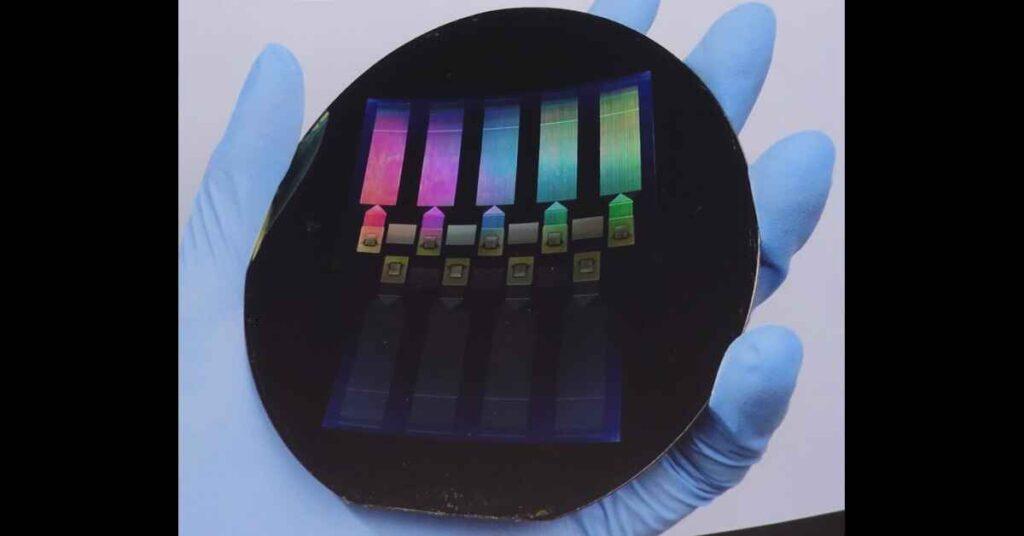Neuralink Brain Chip: A Hopeful New Paralysis Technology
Elon Musk established the brain-computer interface (BCI) business Neuralink in 2016. Neuralink is creating the Neuralink Brain Chip, a wireless implanted gadget that could let users think their way into controlling computers and other gadgets. The gadget may potentially be used to help people regain sensory function that they have lost as a result of illness or accident.
Table of Contents
What is Neuralink?
A tiny chip called the Neuralink Brain Chip is inserted into the brain. Numerous small electrodes on the chip are used to record the electrical activity of neurons. The wireless receiver is implanted under the scalp, where it receives the signals and sends them to a computer, which decodes them and allows the user to control devices or receive sensory feedback. Although Neuralink is still in its infancy, the firm has already made a great deal of strides.
In a pig, Neuralink tested a working prototype of its technology in 2019. The pig was able to use its thoughts to move a cursor on a computer screen. The Neuralink Brain Chip has the potential to assist crippled people reclaim their independence as well as treat several neurological conditions like Parkinson’s disease, epilepsy, and spinal cord injuries.

What is a brain-computer interface (BCI)?
Brain-computer interfaces (BCIs) enable direct communication between the brain and the outside world. Computers, mobility aids, and artificial arms and legs can all be operated by BCIs. They can also be utilized by persons who, as a result of a disease or injury, are no longer able to perceive feeling. BCIs function by converting electrical brain signals into commands that an external device can understand. The most common types of BCIs are non-invasive, which means that no brain surgery is necessary to implant the device there. Electrodes are positioned on the forehead to record brain activity in non-invasive BCIs.
On the other hand, invasive BCIs need to be surgically implanted in the brain. Although incurable BCIs are more dangerous than minimally invasive BCIs, they can record more precise brain signals.
Though BCIs are still in their childhood, they have the power to completely change how we interact with technology and our surroundings. BCIs could, for instance, aid in the recovery of independence for persons who are paralyzed and be used to treat a range of neurological conditions.
Neuralink is one of the most promising BCI businesses. Neuralink is working on a wireless implantable BCI that could let users think to operate computers and other gadgets.
BCIs like the Neuralink Brain Chip may offer the following advantages to paralyzed patients:
- You can operate wheelchairs, computers, prosthetic limbs, and even legs simply the way you think.
- Restore the senses, including the capacity to detect movement and touch.
- Take care of spinal cord damage
How does the Neuralink Brain Chip work?
A wireless implantable device called the Neuralink Brain Chip enables users to command computers and other gadgets with their thoughts. People who have lost their sensory abilities due to illness or accident can use the device to regain them.
A tiny chip called the Neuralink Brain Chip is inserted into the brain. Numerous small electrodes on the chip are used to record the electrical activity of neurons. The wireless receiver is implanted under the scalp, where it receives the signals. The signals are transmitted by the receiver to a computer, which decodes them and enables device control by the user.
The Neuralink Brain Chip must be surgically implanted in the user’s brain before they may utilize it. Under general anesthesia, the procedure takes many hours. The user will need to adjust to applying the gadget after the implant. Playing video games or doing other things that need careful thought before each action can assist with this. The Neuralink Brain Chip will become better at properly decoding the user’s brain impulses over time. The user will be able to command computers and other gadgets with their thoughts once the device has been educated. The user may be able to move the cursor on a computer screen, operate an automated arm, or type words.
Here is a summary of the steps involved in how the Neuralink Brain Chip works:
- The Neuralink Brain Chip is implanted in the brain.
- The device records electrical signals from neurons.
- The signals are transmitted to a wireless receiver under the scalp.
- The receiver sends the signals to a computer.
- The computer decodes the signals and allows the user to control devices or receive sensory feedback.
Potential benefits of the Neuralink Brain Chip for paralyzed people
Regain independence:
People who are paralyzed could use the Neuralink Brain Chip to mentally operate wheelchairs, prosthetic limbs, and other devices. They would be free to walk around and complete activities on their own as a result.
Restore sensory feedback:
Paralyzed patients who have the Neuralink Brain Chip may be able to regain their sense of touch. They could then sense touch, temperature, and movement in their limbs as a result.
Repair spinal cord injuries:
Spinal cord damage might be treated using the Neuralink Brain Chip. People who are paralyzed can regain control of their limbs and start moving thanks to this.
The Neuralink Brain Chip has the potential to significantly enhance the quality of life for those with paralysis in addition to these specific advantages. People who are paralyzed might be able to play games, converse more readily, and engage in novel and interesting interactions thanks to the device for all.
In general, people with paralysis can drastically change their lives because to the Neuralink Brain Chip. By giving disabled people new ways to engage with the world and regulate their bodies, the Neuralink Brain Chip could enable them to lead more fulfilling and independent lives.
Here are some particular instances of how people with paralysis might use the Neuralink Brain Chip:
- A paraplegic person could move about on their own by using a wheelchair and a Neuralink Chip.
- A disabled person could communicate with others and type on a computer using the Neuralink Chip.
- A disabled individual might utilize the Neuralink Chip to engage in online gaming and social networking.
- A paralyzed person may be able to restore some of their lost functions by using the Neuralink Chip to control a prosthetic limb.
The Neuralink Chip despite being in its early stages has the potential to dramatically enhance the lives of persons who are paralyzed.
The current state of Neuralink research

What has Neuralink achieved so far?
Elon Musk launched a Neuralink company that explores brain-computer interfaces in 2016. The wireless integrated Neuralink Neurological Chip may assist users learn how to use computers and other gadgets. The use of the technology can benefit people who have lost their senses due to illness or trauma.
Plenty of progress has been made even though the Neuralink.
Here are some of Neuralink’s achievements so far:
As we know earlier Neuralink received FDA approval to begin humann trails, the current staus is as below:
An exciting development, although it’s still early:
- First human implant: Neuralink reported in January 2024 that their brain chip had been successfully implanted in a human for the first trial. Initial results indicate promise for capturing brain activity, and the patient is recuperating nicely.
- Safety and basic functions are the main priorities of this initial trial. Additionally, the device’s primary goal is to create a basic communication link with the brain.
- Long road ahead: Although this is an important first step, it’s important to keep in mind that extensive application and sophisticated uses such as complete mobility restoration will likely take years or even decades to come.
What are Neuralink’s current goals and timeline?
Neuralink’s timeline for achieving these goals is ambitious. The company is aiming to begin human trials of the Neuralink Brain Chip in 2023 which is accomplished in Jan-2024 & it is successfully implanted in a human brain for the first trial therefore Neuralink hopes to begin commercializing the device in few years later.
Here is a more detailed look at Neuralink’s current goals and timeline:
Ensuring that Neuralink Chip is trustworthy and safe:
Neuralink is trying to ensure that Neuralink Brain Chip is trustworthy and safe.
Create moral standards for using Neuralink technology:
Neuralink is attempting to create moral standards for using its technology. The business is dedicated to making ethical and responsible use of its technology.
Make the Neuralink Chip affordable and accessible to everyone:
The Neuralink Brain Chip should be affordable and available to anyone who needs it, according to Neuralink. The business intends to make the device less expensive and create insurance for it.
Although Neuralink’s current goals and schedule are difficult, the company has the knowledge and resources needed to achieve them. A group of outstanding engineers and scientists are creating the Neuralink firm.
This Chip may significantly improve the quality of life for persons with paralysis and other neurological diseases. The Neuralink Chip gives users the ability to gain control over their bodies and interact with their surroundings in new manners, which may promote a more fulfilling and independent way of life.
How Neuralink could help paralyzed people?
A wireless implantable gadget called the Neuralink Mind Chip might let users think to operate other objects.
For the Neuralink Brain Chip to function, brain neurons’ electrical signals must be captured. The wireless receiver is implanted under the scalp where it receives the signals. The computer decodes the signals that the receiver transmits enabling the user to operate devices.
The Neuralink Brain Chip must first be trained by the user before they may control external devices with their thoughts. This can be accomplished by playing video games or carrying out other activities that call for the user to deliberate over precise motions. The Neuralink Chip will become increasingly adept at precisely decoding the user’s brain signals as they practice.
There may be numerous uses for the Neuralink Chip. The technology, for instance, could be utilized to aid in the independence restoration of those who are paralyzed. Several neural conditions including Parkinson’s disease epilepsy and spinal cord injuries could also be treated with the device.
Here are some specific examples of how the Neuralink Brain Chip could be used to control external devices using thoughts:
- A paralyzed person could use the Neuralink Chip to control a wheelchair and move around independently.
- A person with Parkinson’s disease could use the Neuralink Chip to reduce their tremors and improve their movements.
- A person with epilepsy could use the Neuralink Brain Chip to detect and prevent seizures.
- A person with a spinal cord injury could use the Neuralink Brain Chip to regain control of their limbs and move again.
Repair spinal cord injuries with the Neuralink Brain Chip
Damage to the spinal cord, a network of neurons that transmits signals from the brain to the rest of the body, results in spinal cord injuries. The messages cannot pass via the spinal cord when it is injured, which causes paralysis and other issues.
Bypassing the injured area of the spinal cord, the Neuralink Brain Chip could be utilized to treat spinal cord injuries. The implanted gadget would transfer signals between the brain and the rest of the body above and below the wounded region.
Although research on the Neuralink Mind Chip is still in its early stages, animal tests have demonstrated that it can be used to aid paralyzed animals in regaining their capacity to move. For instance, in one case, researchers were able to teach a paralyzed monkey to control a robotic arm with its thoughts after implanting it with the Neuralink Brain Chip.
The Neuralink Brain Chip has the potential to fundamentally alter how we treat spinal cord injuries. Those who have suffered spinal cord injuries could be able to move and control their body parts once more. Furthermore, it might help those with spinal cord injuries regain sensation and command over their intestines and bladder.
Challenges and risks of Neuralink
Safety concerns for the Neuralink Mind Chip
Before the Neuralink Brain Chip can be utilized on a large scale by people, there are a few safety issues that need to be resolved. The possibility of an infection during the implantation operation or brain injury is one of the main security worries. The potential for the equipment to break is another safety issue.
Here is a more detailed look at some of the safety concerns for the Neuralink Brain Chip:
- Infection: The Neuralink Brain Chip implantation is a challenging surgical technique that has a risk of infection. An infection could harm the brain or possibly be fatal if it happens.
- Brain damage: The Neuralink Brain Chip implantation poses a danger of brain damage as well. Brain damage could result in paralysis, stroke, or other catastrophic issues.
- Failure: The Neuralink Brain Chip is a sophisticated technological device that may experience failure. The device failure could result in several issues such as paralysis, headaches, or even death.
The usage of the Neuralink Brain Chip raises a number of ethical issues in addition to safety ones. Some people are quite worried that technology might be employed to control people’s thoughts or create a new social class of “superhumans.”
Concerns about the Neuralink Brain Chip’s safety and morality will be addressed by Neuralink. To guarantee that the device is safe and used in a responsible and ethical manner, the business is closely collaborating with regulatory authorities.
Ethical concerns for the Neuralink Brain Chip
There are some ethical concerns that need to be addressed before the Neuralink Brain Chip can be widely used in humans. Here are some of the ethical concerns for the Neuralink Brain Chip.
- Mind control: Some people are concerned that the Neuralink Brain Chip could be utilized to exert mental control over others. The tool could be used, for instance, to trick someone into thinking untrue things or coerce them into carrying out undesirable actions.
- Confidentiality: A person’s most private thoughts and memories would be accessible to the Neuralink Brain Chip. Data security and privacy are raised by this. What if, for instance, the gadget was compromised? What if, alternatively, the manufacturer of the device decides to sell the data to outside parties?
- Equality: The device may enable users to work more efficiently or pick up new skills more rapidly. This could leads to inequality between those who own the equipment and those who do not.
The Neuralink Mind Chip raises ethical issues, which Neuralink is committed to addressing. The business has declared its dedication to responsibly and ethically creating the technology.
It’s also crucial to remember that other technologies create ethical questions in addition to the Neuralink Brain Chip. Important ethical issues are also raised by other technologies like social media, gene editing, and artificial intelligence. It is crucial to have a serious discussion about the ethical implications of new technologies as they are being developed.
Conclusion
The Neuralink Chip may be utilized to aid in the regaining of independence for people with disabilities. The device may also be used to treat a number of neurological conditions such as Parkinson’s disease, Alzheimer’s disease and spinal injuries.
There are a few safety and ethical issues that need to be resolved. The possibility of infection, brain injury, and gadget malfunction are a few of the safety issues. Some of the ethical issues are the possibility of mind control, issues with privacy and the emergence of a new social class of “superhumans.”
Neuralink is dedicated to tackling the safety and moral issues raised by the Neuralink Brain Chip. To guarantee that the equipment is safe and utilized in a responsible and ethical manner, the firm closely collaborates with regulatory authorities.
Overall, the Neuralink Chip is an innovative new technology that has the potential to significantly improve the lives of people with impairments and neurological illness. Prior to the device’s widespread use in people, it is crucial to be aware of the safety and ethical issues.
FAQ
What is the Brain Chip Neuralink?
It is a brain-computer interface (BCI) gadget made to capture and decipher neural impulses.
The ultimate goal is to establish a smooth connection between the brain and outside equipment, which may allow paraplegic people to operate wheelchairs, robotic limbs, or even computers with their thoughts.
Can those who are disabled currently can benefit from the Neuralink Brain Chip?
The present trials concentrate on proving fundamental functionality and safety.
Even if it has a great deal of potential, it’s too soon to say for sure whether or not it will enable paralyzed people to regain their mobility.
How secure is the Neuralink Brain Chip?
In the current trials, safety is the first priority.
Nevertheless, brain surgery and gadget implantation carry significant hazards, much like any new medical technology.
Further research is needed to determine long-term safety and possible adverse effects.
When will everyone be able to purchase the Neuralink Brain Chip?
Widespread accessibility is probably a few years away.
Before it is made generally available, more effective studies, regulatory approvals, and technological developments are required.
In what ways does Neuralink raise ethical issues?
There are a number of ethical questions that arise from the possible application of brain-computer interfaces, including security, privacy, and potential abuse.
As this technology develops, it is essential to have honest and ethical conversations.
Proudly powered by WordPress
Image Courtesy of Steve Jurvetson via Creative Commons License.
Image Courtesy of Steve Jurvetson via Creative Commons License.




